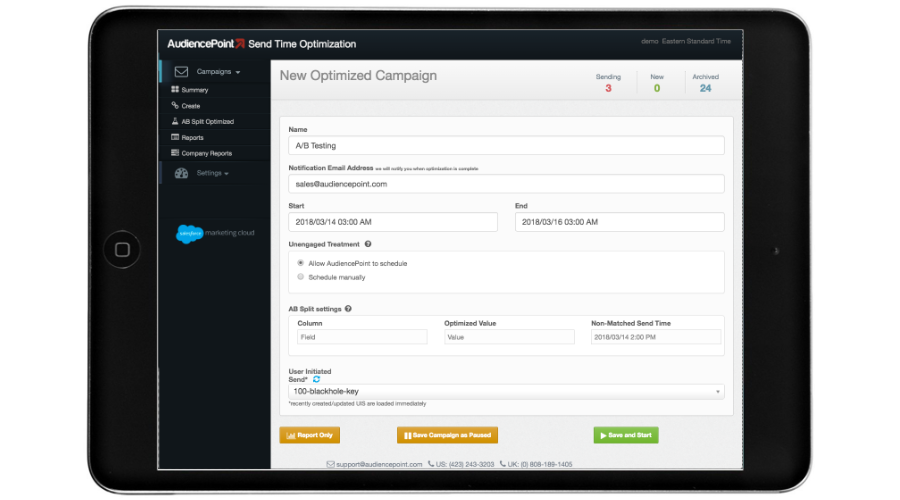AudiencePoint is thrilled to announce our new integration with Klaviyo! AudiencePoint is looking for partners to pilot our...
To improve your email deliverability, a cornerstone of successful email marketing campaigns, understanding its importance and how it influences your email strategy is crucial for marketers aiming to engage their audience effectively.
What Is Email Deliverability?
So, what exactly is email deliverability? Essentially, email deliverability defines the likelihood of your emails reaching the subscribers’ inboxes without being marked as spam or getting lost in the digital ether.
Several key factors impact email deliverability, including the sender’s reputation, the quality of the email content, and the engagement level of the audience. Issues like high bounce rates, frequent spam complaints, and poor list hygiene can significantly undermine your efforts to achieve optimal deliverability rates.
Marketers face common challenges in maintaining high deliverability, such as navigating changing email service provider algorithms, ensuring authentic and engaging content, and managing dynamic email lists. Addressing these challenges requires a proactive, informed approach and a commitment to best practices in email marketing.
What Is Your Email Marketing Strategy?
How do you maintain high email delivery? To achieve high email deliverability, it’s crucial to implement a nuanced and multifaceted email strategy, focusing on several key aspects. Firstly, adopting a double opt-in for email lists ensures that you’re only sending emails to recipients who have explicitly confirmed their interest. This practice not only improves engagement rates but also significantly reduces the chance of being marked as spam.
Utilizing email marketing software is essential in implementing a nuanced email strategy, particularly for improving sender reputation and email authentication. These tools can significantly enhance the effectiveness of your email marketing campaigns through better control over email deliverability.
Regular list cleaning and maintenance are equally critical. Removing inactive or unengaged subscribers helps maintain a healthy sender reputation, which in turn enhances deliverability. Furthermore, segmenting your email lists based on user interests or behaviors allows you to tailor your messages more effectively. Personalized and relevant content is less likely to trigger spam filters or earn spam complaints from recipients.
Maintaining a consistent sending schedule can also impact your deliverability positively. ISPs tend to favor senders with predictable patterns, as erratic sending behavior can be a red flag for spam. Lastly, personalization goes beyond simply addressing recipients by name. Crafting content that resonates with your audience’s specific interests or needs can dramatically reduce spam reports and increase the effectiveness of your email campaigns.
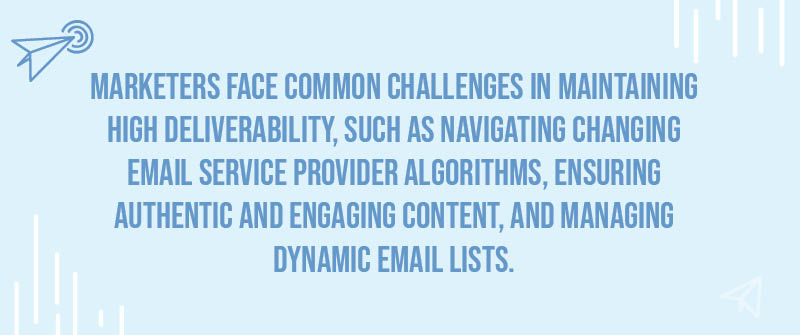
How Do I Fix Email Deliverability Issues?
Addressing email deliverability issues requires a comprehensive approach to troubleshooting and rectification. The first step is identifying the cost of poor email deliverability, which could range from a tarnished sender reputation to suboptimal engagement rates. Incorporating domain-based message authentication, specifically through Domain-based Message Authentication, Reporting, and Conformance (DMARC), alongside Sender Policy Framework (SPF) and DomainKeys Identified Mail (DKIM), plays a crucial role in authenticating emails and ensuring they are not flagged as spam or phishing attempts. DMARC utilizes SPF and DKIM techniques to block fraudulent messages from specific domains, enhancing your email’s trustworthiness and deliverability. It’s essential to conduct an audit of your email practices to pinpoint these problem areas, including the implementation of these authentication protocols.
Improving Email Sender Reputation
Sender reputation is a critical factor that ISPs consider when delivering your emails. If your reputation is damaged due to factors like high bounce rates or spam complaints, it can significantly hinder your deliverability. You can improve your sender reputation by ensuring that your email lists are clean and that you’re only sending to engaged subscribers. Additionally, getting whitelisted by major ISPs can enhance your reputation. Maintaining a good sender score is crucial for improving sender reputation and, by extension, email deliverability, as it reflects your email-sending practices and is influenced by factors such as spam complaints and the status of your domain on industry blocklists.
The Role of Authentication Protocols
Implementing authentication protocols such as SPF, DKIM, and DMARC is crucial for proving your legitimacy to ISPs and preventing phishing attempts under your domain. These protocols help ISPs verify that the emails sent from your domain are indeed from you, thereby increasing the likelihood of your emails being delivered.
Content Optimization
Another vital area in which to fix deliverability issues is to adjust your email content. This involves avoiding words or phrases known to trigger spam filters and designing your emails to be engaging and relevant to your audience, thereby reducing the risk of your emails being classified as spam emails. Optimizing email content not only enhances engagement but also builds trust with Internet Service Providers (ISPs), which is crucial for maintaining high deliverability rates. Additionally, employing A/B testing to see what content performs best can provide insightful data to guide your email strategy.
Enhancing Engagement
Lastly, focusing on engagement is paramount. ISPs track how recipients interact with your emails, and a lack of engagement can lead to poor inbox placement. Techniques such as segmenting your email list, personalizing content, and sending at optimal times can significantly improve engagement rates and, consequently, deliverability. Managing your email subscribers effectively is crucial for maintaining this engagement, including allowing them to easily opt-out through a straightforward unsubscribe process. Simplifying the unsubscribe process not only enhances the user experience but also positively impacts deliverability by reducing spam complaints.
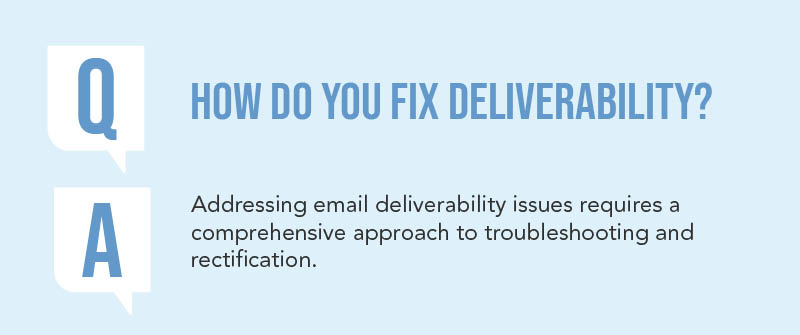
What Decreases Email Deliverability?
There are a few factors that can lead to a low deliverability rate. Here are a few to keep in mind.
High Bounce Rates
One prominent reason for low deliverability is high bounce rates from invalid email addresses. Bounces occur when emails are sent to invalid or inactive email addresses. A high bounce rate signals to Internet Service Providers (ISPs) that you are not maintaining a clean email list, causing them to filter or block your emails.
Spam Traps
Spam traps are email addresses set up by ISPs or anti-spam organizations to identify and catch spammers. These email addresses are not used for communication, so any email they receive is marked as spam. If your email list includes spam trap addresses, your domain’s reputation can be severely damaged, leading to lower deliverability.
Blacklists
Being listed on a blacklist can significantly impact email deliverability. Blacklists are databases of domains and IP addresses known for sending spam. Once an ISP detects that your domain is on a blacklist, it will block or place your emails in the spam folder.
Unverified Sender Domain
Sending emails from an unverified sender domain can also contribute to low deliverability rates. ISPs use sender verification methods like SPF, DKIM, and DMARC to authenticate an email source. If your domain lacks these authentications, your emails may be marked as suspicious, resulting in low deliverability.
Addressing these issues effectively is essential for improving the performance of your email marketing campaigns. You can enhance your email engagement and ROI by understanding and mitigating the causes of low deliverability.
How to Ensure High Email Deliverability?
Email deliverability is a crucial component of any successful email marketing strategy, but what is email deliverability? Ensuring that your emails reach your recipients’ inboxes requires a multifaceted approach. Below are three key practices that can help you maintain high email deliverability:
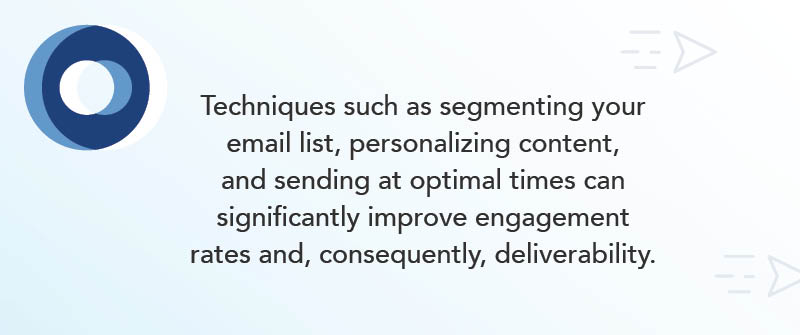
Use Authenticated Email Services
Authenticated email services are essential to ensure your emails are not flagged as spam. Authentication protocols such as SPF (Sender Policy Framework), DKIM (DomainKeys Identified Mail), and DMARC (Domain-based Message Authentication, Reporting & Conformance) are designed to verify that the email is being sent from an authorized server. Additionally, using a dedicated IP address for your email sending can further improve deliverability by ensuring that your email reputation is not impacted by other senders on a shared IP. Implementing these protocols and using a dedicated IP address improves your sender reputation and builds trust with email service providers, increasing the likelihood that your email will be delivered to the intended recipient’s inbox.
Maintain a Clean Email List
Keeping your email list clean and up-to-date is vital for high email deliverability. Remove inactive or unengaged subscribers regularly to avoid sending emails to invalid addresses, which can harm your sender reputation. Utilize double opt-in mechanisms to ensure that subscribers genuinely want to receive your emails. Regularly cleanse your list of spam traps and hard bounces to maintain list hygiene.

Send Relevant and High-Quality Content
The relevance and quality of your email content greatly affect your deliverability. Engage your audience with personalized, meaningful content that provides value. High open and click-through rates indicate to email service providers that your emails are wanted, which can improve your inbox placement rates. Avoid using spammy words and overusing exclamation marks to further enhance deliverability.
How To Test Email Deliverability?
Email deliverability testing involves evaluating whether your emails reach the recipient’s inbox rather than getting filtered into the spam folder or blocked altogether. This process is essential to gauge the success of your email marketing efforts and maintain a high sender reputation.
Using Email Testing Tools
There are numerous tools available to marketers that can help test email deliverability. These tools often provide insights into inbox placement, spam score, and blacklist status. Popular options include Mail Tester, GlockApps, and Litmus. By utilizing these tools, you can identify potential deliverability issues before sending your campaign to a wider audience.
Examining Key Metrics like Open Rates
Analyzing key performance metrics such as open, click-through, and bounce rates can offer valuable information about your email deliverability. A sudden drop in open rates may indicate that your emails are not reaching the inbox. Regularly monitoring these metrics allows you to make data-driven decisions and take corrective actions to improve deliverability.
How Do I Check Email Deliverability In Gmail?
To start checking email deliverability, log in to your Gmail account. Navigate to the ‘All Mail’ folder, which shows all emails, including those that may have bypassed your regular inbox settings. Check this folder to see if the emails you sent appear here.
Gmail also provides several internal tools and features to help gauge email deliverability. Use the ‘Filters’ feature to filter all outgoing emails. This filter can automatically categorize and label your emails, making it easier to track responses and delivery over time. Additionally, Gmail’s built-in spam folder provides insights into which emails are being flagged, offering clues on adjusting your sending strategies.
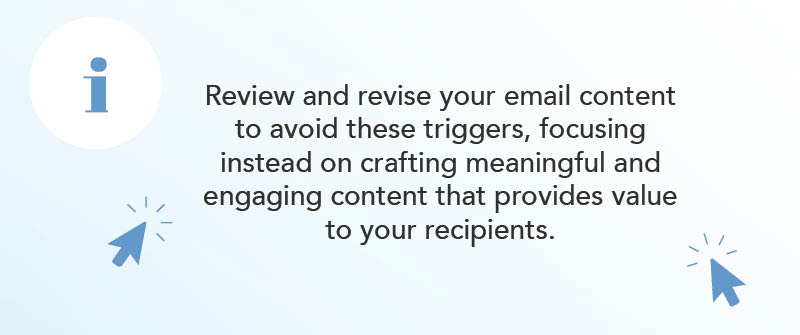
How Can I Improve My Spam Rating?
Improving your spam rating is crucial for ensuring your emails reach the inbox. Understanding how spam filters work is the first step toward optimizing your emails for better deliverability. Spam filters scrutinize various aspects of an email, from its content to sender reputation, to determine if it might be unsolicited or harmful. To enhance your spam rating, begin with an audit of your current practices to identify potential red flags that could be affecting your rating. Additionally, it’s important to maintain email list hygiene to avoid spam traps, which can significantly harm your deliverability and sender reputation.
Using Spam Check Tools
Before sending out your marketing emails, leverage spam check tools that simulate how your email might be perceived by different spam filters. These tools are crucial for marketing emails as they provide insights on potential triggers in your email content or header that could affect deliverability. Making adjustments based on these recommendations can significantly lower your chances of being marked as spam, ensuring your marketing emails reach your subscribers’ inboxes.
Avoiding Trigger Words and Phrases
Email content plays a substantial role in spam filtering. Certain words and phrases, especially those commonly associated with unsolicited advertising or phishing attempts, can elevate your spam rating. Review and revise your email content to avoid these triggers, focusing instead on crafting meaningful and engaging content that provides value to your recipients.
Implementing Email Authentication
Email authentication methods such as Sender Policy Framework (SPF), DKIM, and DMARC are critical in validating your emails’ integrity and sender identity. Including SPF alongside DKIM and DMARC as essential methods for email, authentication ensures a comprehensive approach to verify the legitimacy of the sender and prevent emails from being sent from unauthorized servers or addresses. Setting up these protocols correctly helps email providers recognize your emails as legitimate, reducing the likelihood of them being flagged as spam.
Encouraging Interaction
Another effective strategy to improve your spam rating is by encouraging your recipients to interact with your emails. Achieving the goal of getting emails into the recipient’s inbox is crucial for successful engagement and an improved spam rating. Actions such as replying to an email, adding your sending address to their contact list, or even moving your email from the spam folder to the inbox signal email providers that your communications are welcome and should not be considered spam. Engagement can be fostered through personalized content, compelling calls to action, and providing clear value in every communication.

What Is A Good Email Delivery Rate?
Understanding what constitutes a good email delivery rate is pivotal for marketers aiming to optimize their email marketing campaigns. A strong delivery rate not only reflects the healthiness of your email list but also your sender reputation among Internet Service Providers (ISPs). It’s crucial to understand the role of the internet service provider (ISP) in this process, as emails must pass through the ISP’s gateway, and the ISP may block emails suspected to be spam. This highlights the importance of being aware of ISP policies and practices to ensure a high delivery rate. Essentially, a good email delivery rate signifies that the bulk of your emails are reaching the inbox of your subscribers rather than getting lost, bouncing back, or falling into spam folders.
What Is The Average Email Delivery Rate by Industry?
How do you measure email deliverability? Industry benchmarks for a good email delivery rate typically hover around 95% or higher. This figure is a strong indicator that your emails are well-received by servers and are making it to your intended recipients’ inboxes. Falling below this benchmark can signal that it’s time to reevaluate your email strategy, list health, and possibly the tools and services you are using for email marketing.
The Impact of Delivery Rates on Campaign Success
High email delivery rates are intricately tied to the overall success of your email marketing campaigns. The more emails that successfully reach the inbox, the higher your chances of engagement, conversion, and, ultimately, ROI from your campaigns. On the contrary, low delivery rates can drastically diminish these opportunities, affecting your bottom line and possibly damaging your brand’s reputation over time.
How to Monitor and Interpret Your Delivery Rate Statistics
Monitoring your email delivery rate is a critical ongoing task that requires robust tools and a comprehensive understanding of email analytics. Utilizing email marketing platforms that provide detailed reports and insights into delivery rates, open rates, bounce rates, and more can help decipher the health of your email campaigns. These insights enable email marketers to make data-driven decisions to improve their strategies and maintain or exceed industry benchmarks for email delivery rates.

Conclusion and Best Practices
In conclusion, improving your email deliverability rates is not a one-and-done task but a continuous effort that requires a comprehensive understanding of both the technical and strategic aspects of email marketing. Key to this is adopting best practices that are geared towards enhancing your sender’s reputation, ensuring your emails reach your subscribers’ inboxes, and ultimately achieving your marketing objectives.
Regularly updating your email strategy to adapt to the changing landscape of email marketing is crucial. This includes keeping abreast of the latest in spam algorithms, understanding the nuances of subscriber engagement, and continuously refining your email content to keep it relevant and engaging.
To truly excel and maximize your email marketing ROI, it’s imperative to have a dynamic approach. This includes leveraging the latest technologies and platforms that offer deeper insights into your email campaigns’ performance and your subscribers’ behaviors. Implementing the recommended practices not only helps improve your deliverability but also builds a positive and lasting relationship with your audience.
Boost your email engagement and drive more revenue with the #1 Email Engagement Platform. AudiencePoint gives you unparalleled visibility into your subscribers’ inbox habits, leveraging 85 trillion tracked events and a second-party data pool to optimize re-engagement campaigns, improve deliverability, and maximize ROI. Request a demo now and see how AudiencePoint can take your email marketing to the next level.




